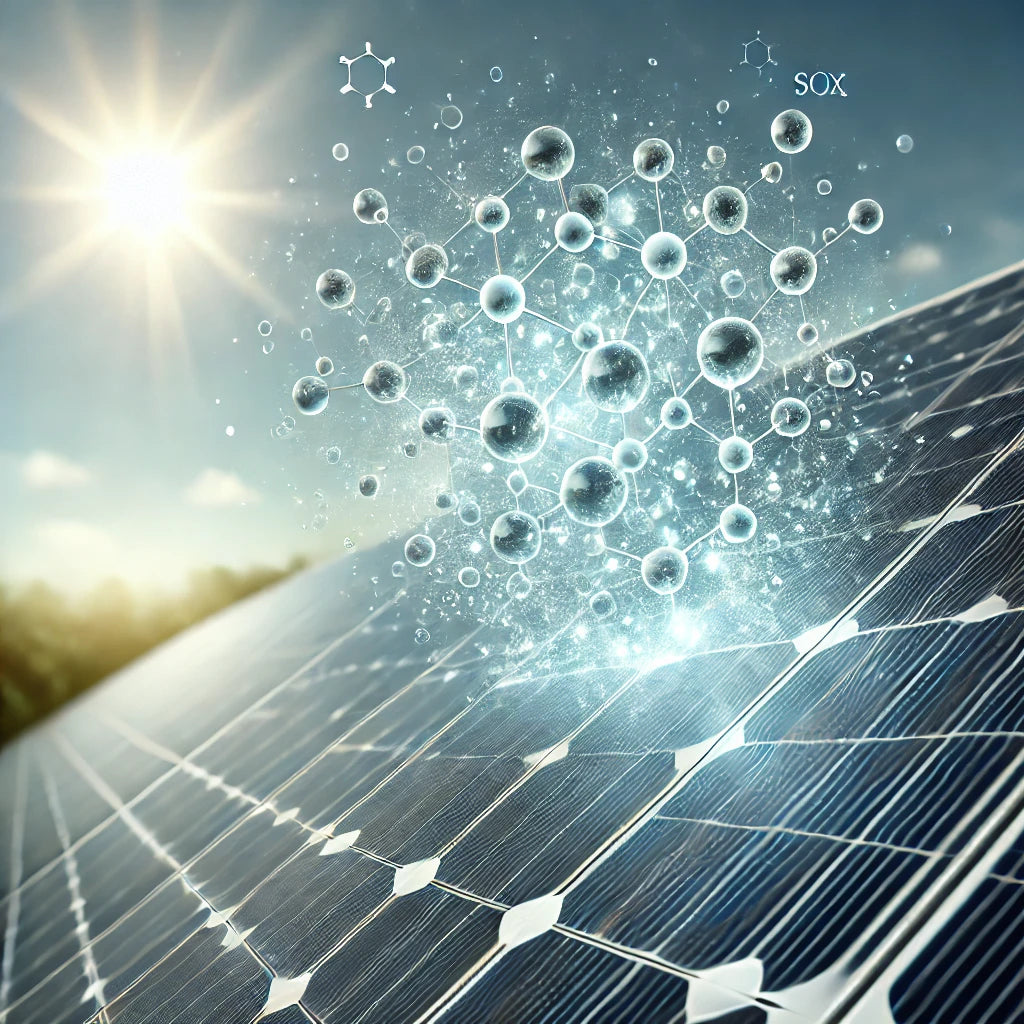
Nanotechnology and Solar Energy: Increasing the Efficiency of Panels
Share
Introduction :
Solar panels are benefiting from major advances thanks to nanotechnology. Special coatings help maximize light absorption and keep panels cleaner for longer, increasing energy efficiency. This article examines how these developments are promoting more cost-effective solar power.
Topic covered :
- Nanotechnology innovations for solar panels
- Improving sustainability and energy efficiency
- Future prospects for solar energy
Nanotechnology and Solar Panels: Towards More Efficient Energy
Introduction
Nanotechnology is transforming solar energy by bringing major innovations to photovoltaic panels. Thanks to special coatings, solar panels are becoming more efficient and more durable. These coatings help increase light absorption while reducing energy loss, which helps maximize electricity production. In addition, the self-cleaning properties of nanocoatings help keep panels clean for longer, optimizing their long-term performance. This article explores how nanotechnology is changing the solar industry, making this renewable energy more affordable and profitable.
Innovations in Nanotechnology for Solar Panels
Nanotechnology Coatings to Maximize Light Absorption
Traditional solar panels have some limitations in terms of light absorption, especially in bad weather or at an indirect light angle. Nanotechnology overcomes these obstacles by using special coatings that capture light more efficiently, even in suboptimal conditions.
-
Absorbing Nanoparticles : The nanoparticles used in solar coatings act as “light traps,” increasing the amount of photons absorbed by photovoltaic cells. This is possible thanks to materials such as titanium or graphene nanoparticles, which can interact with light in a much more efficient way than traditional materials.
-
Reduction of Reflections : Nanocoatings can also be used to reduce the reflectivity of solar panels. By decreasing the amount of reflected light, these panels absorb more solar radiation, increasing their overall efficiency.
Anti-fouling and self-cleaning effect
The accumulation of dust, pollution, and other debris on the surface of solar panels can significantly reduce their energy efficiency. Nanocoatings with self-cleaning properties are a promising solution to this problem. Thanks to hydrophobic nanoscale structures, these coatings allow dirt particles to be naturally washed away by rain or even air.
-
Hydrophobic Coatings : Nano-structured surfaces prevent water from clinging to the panels, reducing the formation of water spots and dirt accumulation. These panels therefore stay cleaner for longer without the need for frequent manual cleaning, improving their long-term performance.
-
Anti-fouling properties : In addition to the self-cleaning effect, some nanotechnology coatings are also designed to be non-stick. This prevents dust particles from sticking to the surface of the panels, even in particularly dusty or polluted environments, such as desert regions.
Improving Sustainability and Energy Efficiency
Increased Resistance to Climatic Conditions
Solar panels exposed to harsh weather conditions, such as extreme temperatures, strong winds, or hail, can suffer damage that affects their lifespan. Nanotechnology can strengthen the panels against these environmental aggressions, improving their durability.
-
Impact and Scratch Resistance : Nanocoatings strengthen the surface of solar panels, making them more resistant to impacts and scratches. This is especially beneficial in areas where harsh weather can damage the panels.
-
UV Protection : The sun’s ultraviolet (UV) rays can degrade materials over time. Nanocoatings provide UV protection, extending the life of the panels while maintaining their energy efficiency.
Energy Conversion Optimization
Photovoltaic cells convert sunlight into electricity, but the efficiency of this conversion is limited by several factors, including temperature and the quality of the materials used. Innovations in nanotechnology can improve this energy conversion by reducing heat loss and increasing the amount of light captured.
-
Plasmonic Nanostructures : Plasmonic nanostructures are used to concentrate sunlight onto specific areas of photovoltaic cells. This increases the amount of light absorbed by the cells and improves their energy efficiency, even when the illumination level is low.
-
Reduced Heat Loss : Nanotechnology coatings help reduce heat loss, a major problem that reduces the efficiency of solar panels. By minimizing the effects of overheating, these panels maintain a more consistent efficiency throughout the day.
Future Prospects for Solar Energy
Towards Ultra-Efficient Solar Panels
Researchers continue to develop next-generation solar cells that use nanotechnology to achieve even higher levels of efficiency. Perovskite solar cells, for example, have shown enormous potential in terms of the efficiency of converting light into electricity. When combined with nanoscale technologies, these cells could offer energy efficiencies far beyond those of traditional silicon photovoltaic cells.
- Transparent Solar Panels : Nanotechnology also makes it possible to create transparent solar panels that can be integrated into windows or building facades, generating energy without compromising aesthetics or architectural function. This could transform buildings into real solar power plants.
Environmental and Economic Impact
The integration of nanotechnology into solar panels also has a positive impact on the environment. By increasing the efficiency of the panels, it is possible to produce more renewable energy with fewer resources, thus reducing dependence on fossil fuels and decreasing greenhouse gas emissions.
- Reducing Solar Energy Costs : As technology continues to improve, the production costs of nanotechnology solar panels are also expected to decrease. This cost reduction will make solar energy more accessible and competitive with other energy sources, accelerating the global transition to renewable energy.
Conclusion
Nanotechnology is revolutionizing the solar industry by improving the energy efficiency, durability, and cost-effectiveness of solar panels. With nanoscale coatings and innovations in the structure of photovoltaic cells, the future of solar energy looks brighter than ever. These technological advances will play a key role in the transition to clean and sustainable energy, while providing practical solutions to reduce the global carbon footprint and meet growing energy demand.
